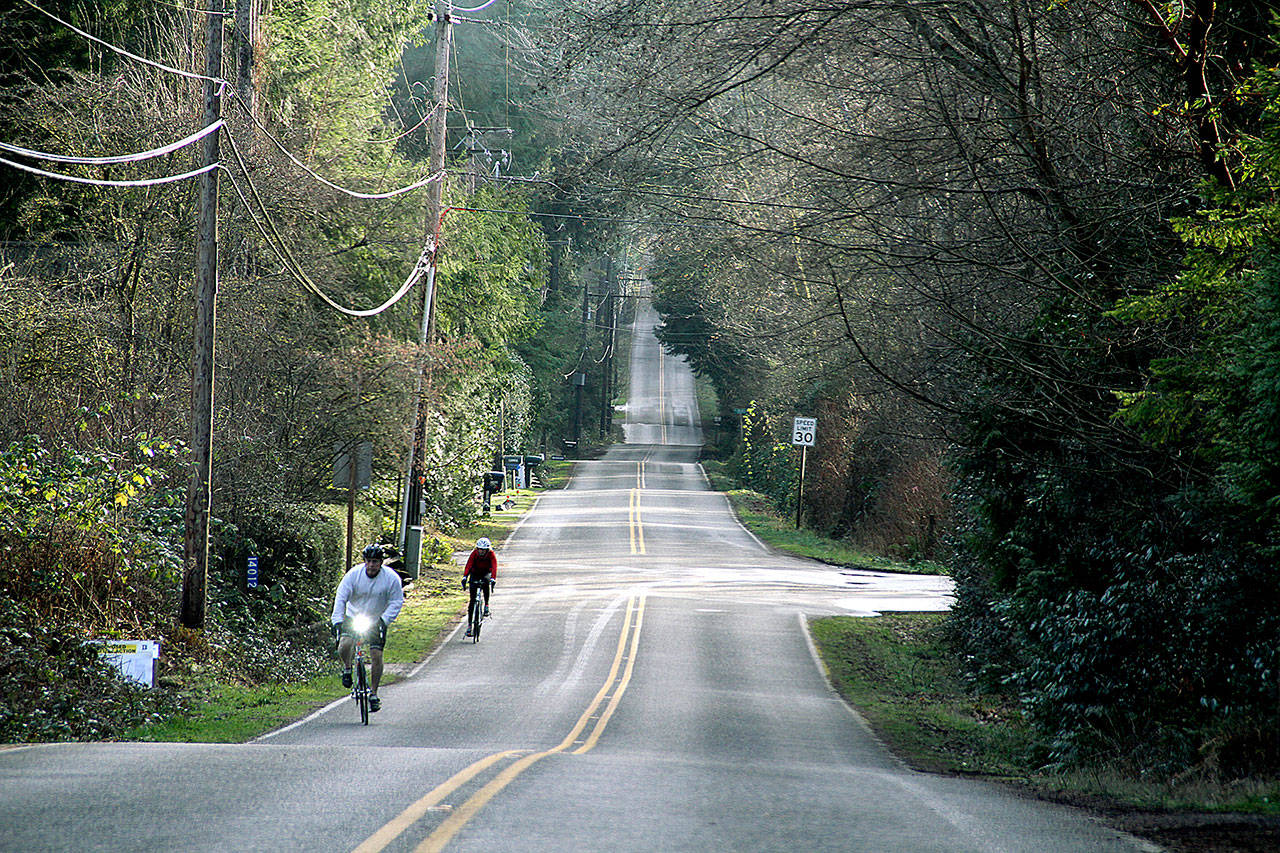A proposed $15 million bond to pay for new trails, roadside improvements and sidewalks to benefit bicyclists and walkers will cost the owner of median-valued home about $185 more each year in new taxes, according to the city of Bainbridge Island.
The Bainbridge Island City Council is expected to vote at its meeting Tuesday to put the property tax increase on the November 2018 ballot.
The $15 million bond has been talked about for years on Bainbridge, and the current version has been crafted to raise taxes for seven years to pay for non-motorized infrastructure improvements.
If approved by Bainbridge voters in the fall, higher property taxes will take effect in 2019.
City officials note that, if approved, property taxes will raise 28 cents per $1,000 of assessed property value. For the owner of a $660,000 (the median home value on Bainbridge), the property tax bill will rise by $185.
Bainbridge officials have until Aug. 7 to notify Kitsap County officials of additions to the Nov. 6 General Election ballot. That leaves just the July 10 or July 24 meetings of the council to approve a ballot proposition, unless a special meeting is called.
Other deadlines are also nearing.
Bainbridge is seeking residents who want to volunteer to write “pro” and “con” statements for the bond proposal for the county’s voters guide. Members of the pro and con committees must be appointed by Aug. 7, as well. Those committees will have until Aug. 13 to prepare their statements for the voters guide, and must submit rebuttal arguments by Aug. 20.
If approved by the council, the bond measure this November will be the city’s first ballot measure since November 2013, when the city asked voters to approve a $15 million proposition for a new police station-municipal court on land just north of city hall. Prop. 1, however, fell in a landslide defeat, with more than 75 percent of voters opposed, and city officials have yet to decide how to fund a new police station.
The new ballot measure, also called Prop. 1, will carry the title “Connecting Bainbridge: SAFE Mobility Levy.”
Promoted as a safety and mobility measure, funds raised from the tax levy will pay for trails, sidewalks, road shoulder improvements and crosswalks.
The ballot measure itself does not identify specific projects that will be funded.
Instead, a resolution that is expected to be passed by the council will detail how the tax levy will be used:
• 50 percent of funding will go to shoulder improvements on major island roads;
• 20 percent will go to safe routes to schools and other off-road trail projects;
• 15 percent will go to pedestrian improvements in the Winslow core;
• 10 percent will be set aside for an “opportunity fund” to “to take advantage of opportunities that arise during the seven-year period to complete important projects on the project list,” according to the resolution; and
• 5 percent will be used as matching funding for expansion of the Sound to Olympics Trail.
The resolution sets our shoulder improvement projects that include Fletcher Bay Road and Eagle Harbor Drive, as well a sidewalk along Grow Avenue, a trail behind Woodward Middle School and Sonoji Sakai Intermediate School, and the Lost Valley intra-island trail.
The resolution also notes that its detailing of percentages for funding areas are not strict requirements on how the new levy funding will be spent, but rather are targets for “buckets” of capital improvement areas.
“Deviations from the targets will be allowed in order to balance the funding required for different projects once the actual costs of those projects are known,” the resolutions states.
The resolution also calls for a citizen committee to be formed to recommend the projects that will be funded by proceeds from Prop. 1.
Taxes raised by Prop. 1 will also be sued to hire a consultant firm “to design and implement the project selection process.” Funding for the consultant will come from the “opportunity fund” bucket of the project list.


